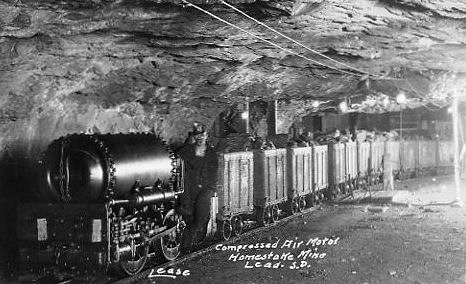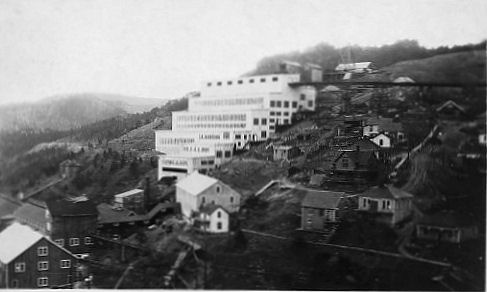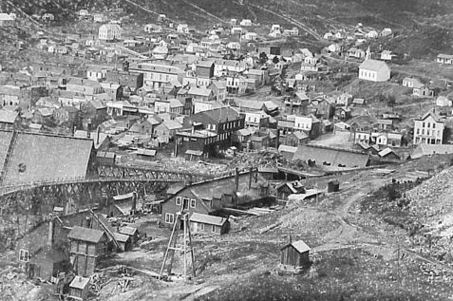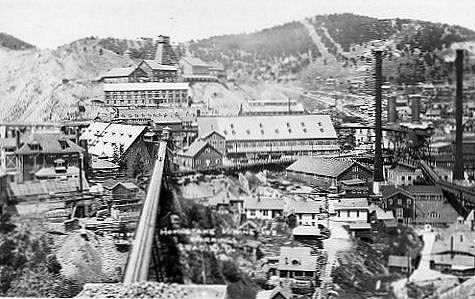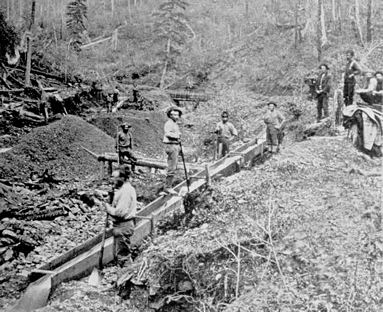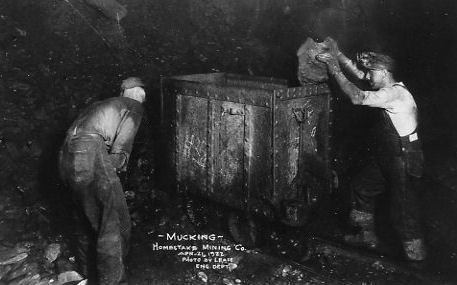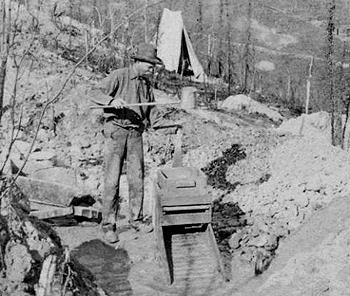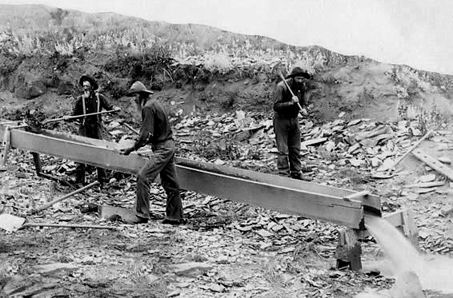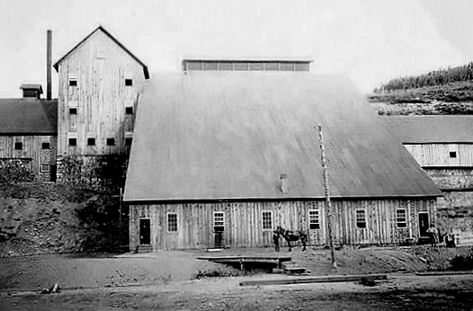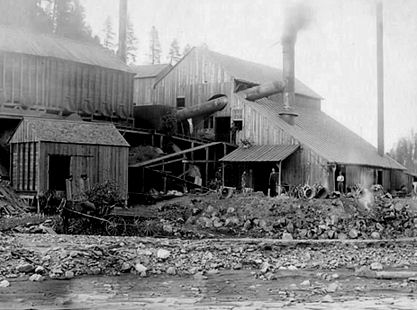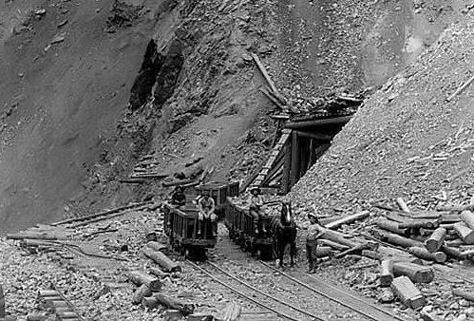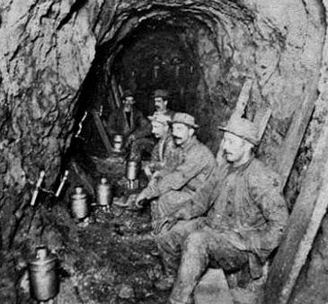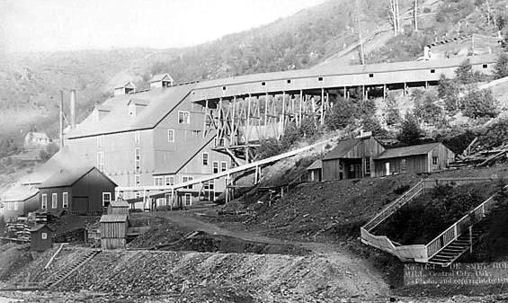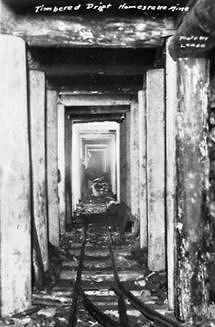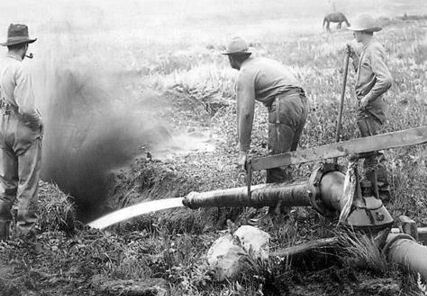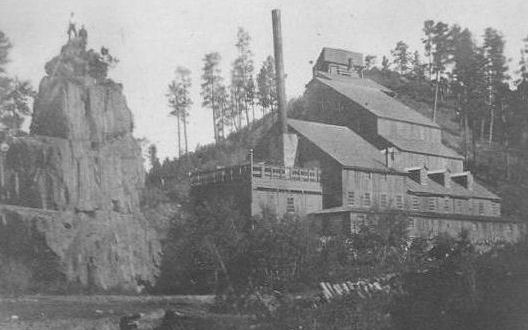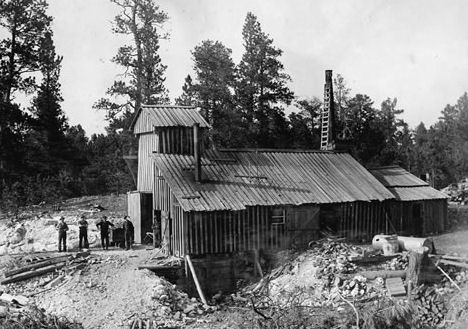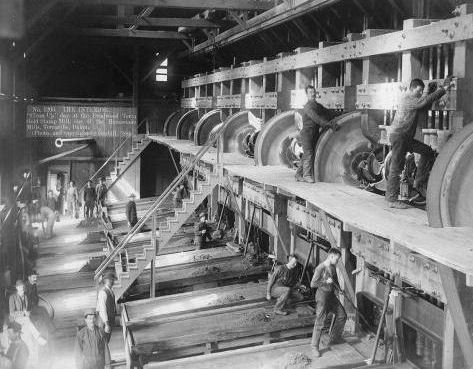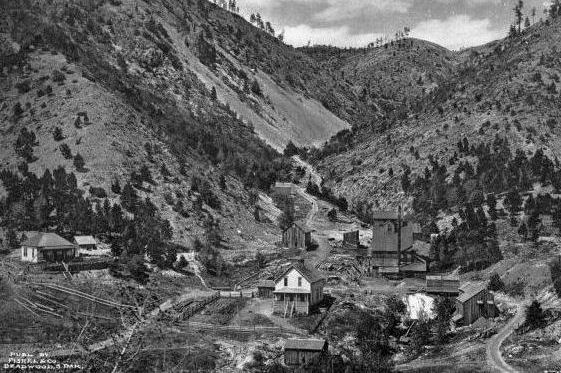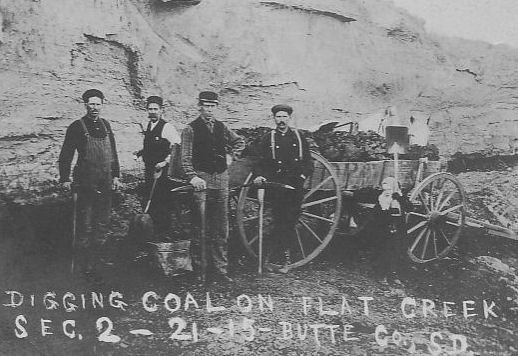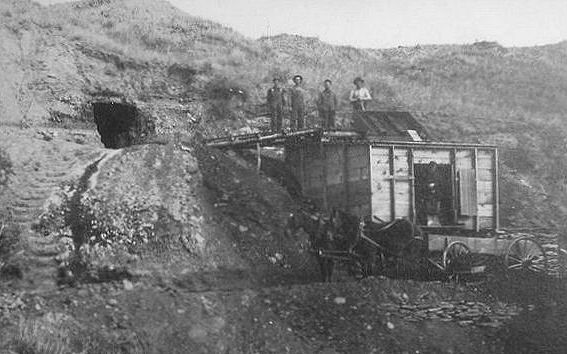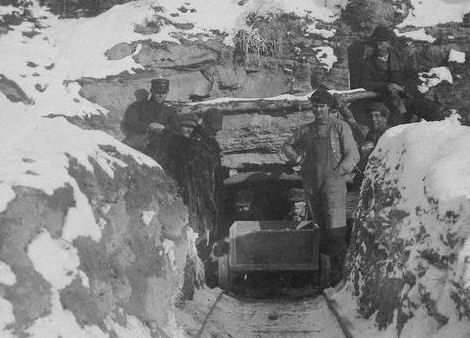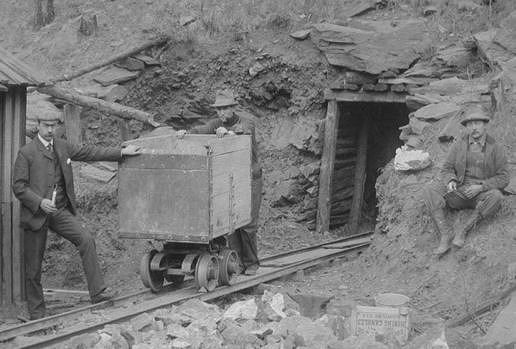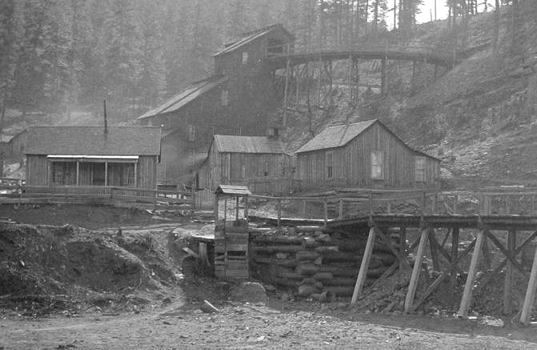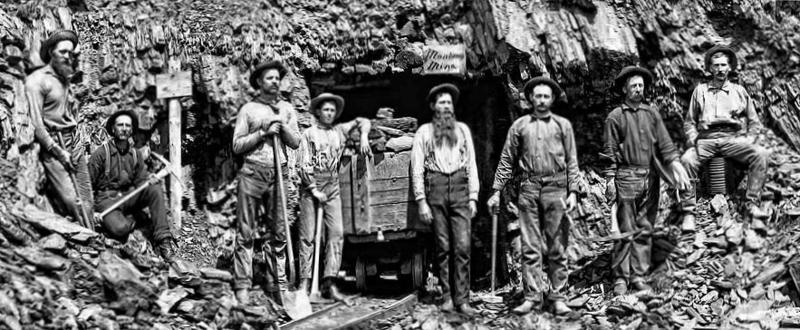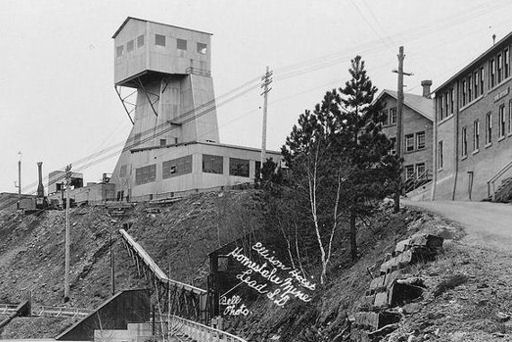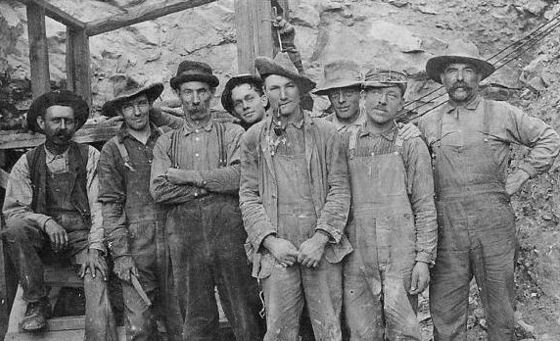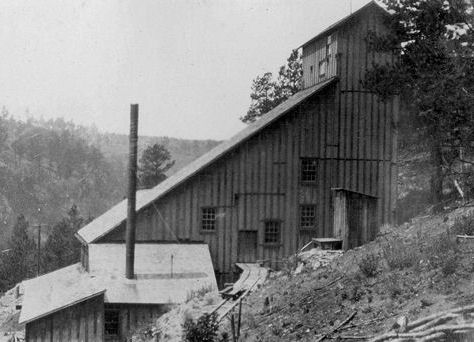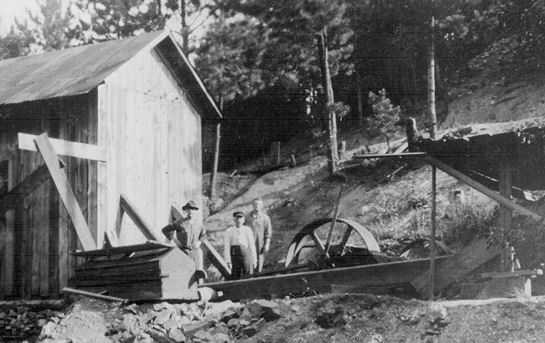SOUTH DAKOTA MINES
Homestake Mine - Lead, South Dakota
Homestake Mine - Lead, South Dakota
Homestake Mine - Lead, South Dakota
Rumors and poorly documented reports of gold in the Black Hills go back to the early 1800s. In the 1860s, Roman Catholic missionary Father De Smet is reported to have seen Sioux Indians carrying gold which they told him came from the Black Hills. The Black Hills Gold Rush began in 1874. The first arrivals were a force of one thousand men led by George Armstrong Custer to investigate reports that the area contained gold, even though the land was owned by the Sioux. They found small amounts of gold in present day Custer, South Dakota, and looked for better paying locations. They moved north, establishing the towns of Hill City, Sheridan, and Pactola. At each spot they found flakes of gold, but not the bonanza they sought. Things changed when the miners stumbled across Deadwood and Whitewood Creeks in the northern Black Hills. For the initial discoverors, each spade of earth revealed a veritable fortune in gold. By 1876, miners had claimed all the land around the creeks. Although all the land was claimed thousands more flocked in, hoping to find a missed spot. The gold the miners found was placer gold, loose gold pieces that were mixed in with the rocks and dirt around streams. Most good prospectors knew that this placer gold was eroded from hard rock deposits. So while many still flocked to Deadwood, others looked for the hardrock deposits that were the source of the placer gold.
Hearst consolidated and enlarged the Homestake property by fair and foul means. He bought out some adjacent claims, and secured others in the courts. A Hearst employee killed a man who refused to sell his claim, but was acquitted in court after all the witnesses disappeared. Hearst purchased newspapers in Deadwood to influence public opinion, and an opposing newspaper editor was beaten up on a Deadwood street. Hearst himself realized that he might be on the receiving end of violence, and wrote a letter to his partners asking them to provide for his family should he be murdered. In the end, however, Hearst was the one who walked out alive, and very rich.
The gold ore mined at Homestake was always low grade (less than one ounce per ton), but the body of ore was very large. Through 2001, the mine produced 39.8 million ounces of gold and 9 million ounces of silver. In terms of total production, the Lead mining district, of which the Homestake mine is the only producer, was the second-largest gold producer in the United States, after the Carlin district in Nevada.
In 1875, a miner named John B. Pearson found gold in a narrow canyon in the Northern Black Hills. This canyon became known as "Deadwood Gulch," because of the many dead trees that lined the canyon walls at the time. The settlement of Deadwood began in 1876 and has been described as an illegal settlement, since it lay within the territory granted to Native Americans in the 1868 Treaty of Laramie. The treaty had guaranteed ownership of the Black Hills to the Lakota people in perpetuity, and disputes over the Hills are ongoing, having reached the United States Supreme Court on several occasions. However, in 1874, Colonel George Armstrong Custer led an expedition into the Hills and announced the discovery of gold on French Creek near present-day Custer, South Dakota. Custer's announcement triggered the Black Hills Gold Rush and gave rise to the lawless town of Deadwood, which quickly reached a population of around 5,000.
As the economy changed from gold rush to steady mining, Deadwood lost its rough and rowdy character and settled down into a prosperous town. In 1876, a smallpox epidemic swept through the camp, with so many falling sick that tents had to be set up to quarantine them. Also in that year, General George Crook pursued the Sioux Indians after the Battle of Little Big Horn on an expedition that ended in Deadwood, and that came to be known as the Horsemeat March. The famous Homestake Mine in nearby Lead, the largest gold mine in the United States, was established in 1877, and would operate for more than 100 years.
Placer Mining - Deadwood Gulch
Placer Mining - Deadwood Gulch
Placer Mining - Rockerville, Dakota Territory
Deadwood Reduction Works - Deadwood, SD
Deadwood Smelter - Deadwood, SD
On April 9, 1876 Fred and Moses Manuel, Hank Harney and Alex Engh discovered a gold outcropping near Lead, South Dakota; they claimed their find and named it the Homestake, a name that was to become synonymous with longevity of production They had located the area from which the already discovered placer gold in Deadwood Creek had eroded. It was here that men would produce ten percent of the world’s gold supply over the next one hundred and twenty five years. Many more prospectors hoped to find another “Homestake” so they continued to look, but the Homestake mine was one of a kind, not to be duplicated.
A trio of mining entrepreneurs, George Hearst, Lloyd Tevis, and James Ben Ali Haggin, bought the Homestake claim for $70,000 the following year. George Hearst arrived at the mine in October 1877, and took active control of the property. Hearst had to haul in all the mining equipment by wagons from the nearest railhead in Sidney, Nebraska. Arthur De Wint Foote worked as an engineer. Despite the remote location and the difficulty in hauling in equipment, an 80-stamp mill began crushing Homestake ore in July 1878.
The partners sold shares in the Homestake Mining Company, and listed it on the New York Stock Exchange in 1879. The Homestake would become one of the longest-listed stocks in the history of the New York Stock Exchange.
Homestake Open Cut - Lead, SD
Hydraulic Mining - Rockerville, Dakota Territory
DeSmet Gold Stamp Mill
Homestake Mine and Town of Lead, SD
Black Hills miners at lunch
Etta Mine - Keystone, SD
White Spar Mica mine - Custer, Custer District, SD
Although coal can be found in the Black Hills, it was never mined profitably. The Firesteel coal fields in the north-central part of the state did provide some profitable mines for a few years. These fields were estimated to contain as much as 137,580,000 tons of coal. The area showed such promise that the South Dakota Relief Agency started a strip-mining operation in a state-owned mine there in 1933. The mine proved ineffective as a state-owned investment and closed in 1934. Geographically, the South Dakota state coal mine had actually been located over the border in North Dakota. Private and commercial owners mined in the Firesteel area until 1969.
Native Americans may have used Firesteel coal for personal use early on, but Andrew Traversie and William Benoist did the first confirmed mining in the Firesteel coal fields in 1907. They mined coal for personal use, although some was eventually sold. The first significant commercial operations began around 1911 with the operation owned by Fred Hammersly and Charles Lindt. Lindt’s mine was considered as a potential site for a state-owned coal mine in 1920. The largest mining operation in the area, the Firesteel Coal Company, formed in 1923. This company employed over 60 men and shipped coal as far away as Iowa. Production climbed to over 40,000 tons a year, peaking with 53,743 tons in 1942. The company was unable to maintain that production level and it fell to below 10,000 tons per year during the labor shortage created by World War II.
Coal Miners - Tama, SD
Coal Mining - Flat Creek Sec. 2-21-15 Butte Co., SD
Phillips Coal mine - Perkins Co. SD
Deadwood Terra Gold Stamp Mill - Terraville, Dakota Territory
Deadbroke Mining Co. - Deadwood, SD
Montana Mine - Rochford District, Lawrence Co., SD
Tykoon MIne - Keystone, Black Hills, SD
Tykoon MIne - Keystone, Black Hills, SD
Ellison Hoist, Homestake Mine - Lead, SD
Black Hills, South Dakota Miners
Deadwood Lead & Zinc Co. - Spruce Gulch Deadwood, SD
Deadwood Lead & Zinc Co. - Spruce Gulch Deadwood, SD
